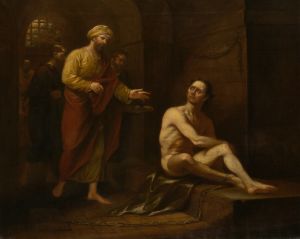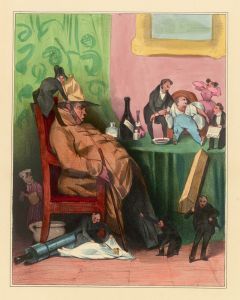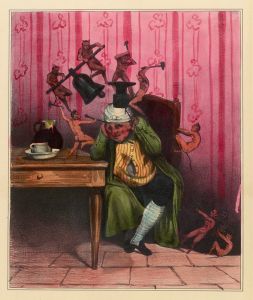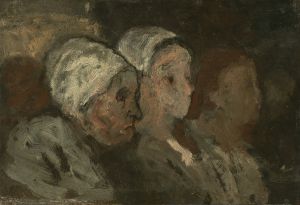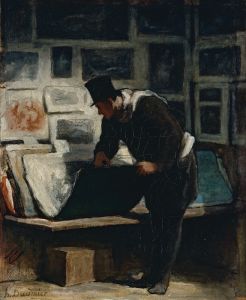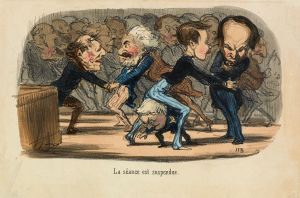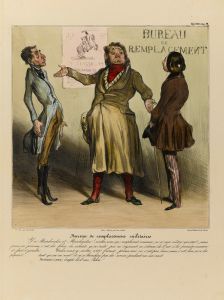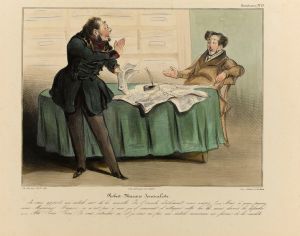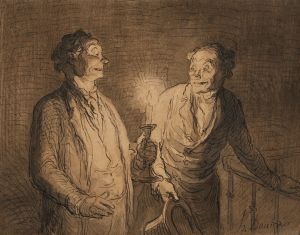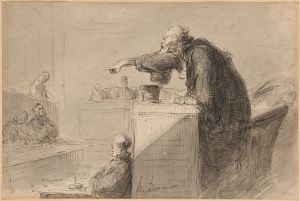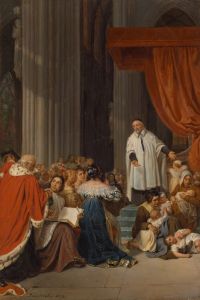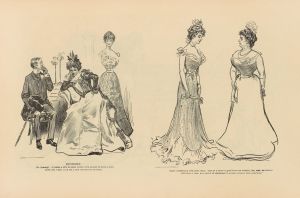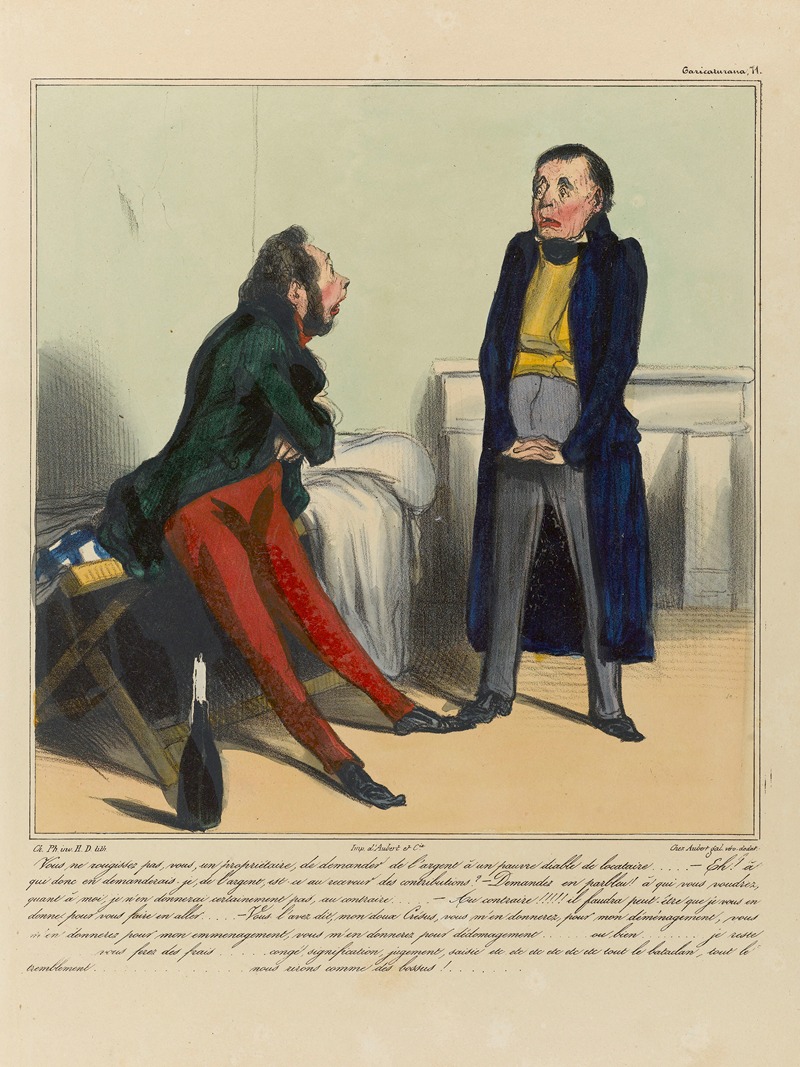
Vous ne rougissez pas, vous, un propriétaire, de demander de l’argent à un pauvre diable de locataire
A hand-painted replica of Honoré Daumier’s masterpiece Vous ne rougissez pas, vous, un propriétaire, de demander de l’argent à un pauvre diable de locataire, meticulously crafted by professional artists to capture the true essence of the original. Each piece is created with museum-quality canvas and rare mineral pigments, carefully painted by experienced artists with delicate brushstrokes and rich, layered colors to perfectly recreate the texture of the original artwork. Unlike machine-printed reproductions, this hand-painted version brings the painting to life, infused with the artist’s emotions and skill in every stroke. Whether for personal collection or home decoration, it instantly elevates the artistic atmosphere of any space.
Honoré Daumier was a prominent French artist known for his caricatures, paintings, and sculptures, often focusing on social and political themes. One of his works, "Vous ne rougissez pas, vous, un propriétaire, de demander de l’argent à un pauvre diable de locataire" (translated as "You, a landlord, do not blush when asking a poor devil of a tenant for money"), exemplifies his critical approach to societal issues.
Daumier was born in Marseille, France, in 1808 and moved to Paris with his family in 1816. He began his career as a lithographer and soon became known for his satirical cartoons, which were published in various newspapers and journals. His work often critiqued the political and social structures of his time, particularly during the July Monarchy and the Second French Empire.
The artwork in question is a lithograph, a medium Daumier frequently used to reach a broad audience. Lithography allowed for mass production, making it an effective tool for social commentary. Daumier's lithographs were published in popular satirical journals such as "La Caricature" and "Le Charivari," where they reached a wide readership and influenced public opinion.
"Vous ne rougissez pas, vous, un propriétaire, de demander de l’argent à un pauvre diable de locataire" is a part of Daumier's broader critique of the bourgeoisie and the social injustices of his time. The piece depicts a landlord demanding rent from a tenant, highlighting the economic struggles faced by the lower classes and the indifference of the wealthy. This theme was recurrent in Daumier's work, as he often portrayed the hardships of the working class and the exploitation they suffered at the hands of the more affluent.
Daumier's art was not only a reflection of his personal views but also a response to the socio-political climate of 19th-century France. The July Monarchy (1830-1848) and the subsequent Second Empire (1852-1870) were periods marked by significant social and economic changes, including urbanization and the rise of the bourgeoisie. These changes often led to increased economic disparity, which Daumier captured in his work.
Despite facing censorship and legal challenges due to the provocative nature of his art, Daumier continued to produce works that critiqued authority and championed the plight of the common people. His ability to convey complex social issues through humor and satire made him a significant figure in the world of art and journalism.
Today, Daumier is celebrated for his contributions to the art of caricature and his role in shaping public discourse through visual media. His works are housed in major museums around the world, including the Louvre in Paris and the Metropolitan Museum of Art in New York, where they continue to be studied and appreciated for their artistic and historical significance.






